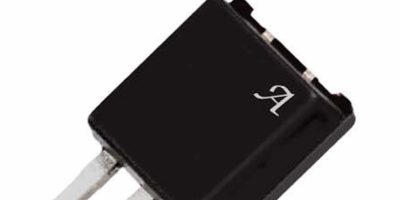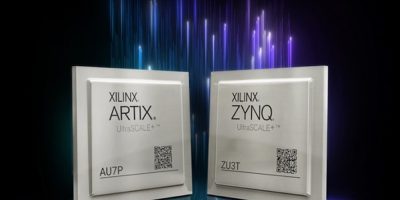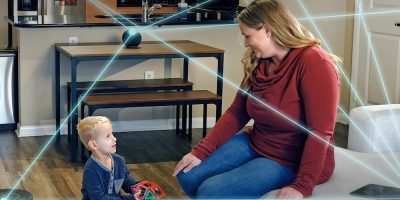The A31316 3D Hall-effect position sensor is the latest addition to Allegro MicroSystems’ 3DMAG line of 3D sensors.
The sensors are offered in what is claimed to be the industry’s smallest 4.0 x 4.0mm body PCB-less package. They are suitable for automotive safety and advanced driver assistance systems (ADAS) applications that require reliable performance in harsh conditions such as powertrain and chassis applications. They are also suitable for industrial applications that require linear or rotary sensing.
Powertrain and chassis applications, passenger restraint systems, and shifter systems, are subjected to environmental vibrations and contaminants that can degrade performance. The position sensors used in powertrain and chassis applications typically require support components, like PCBs and capacitors. When a position sensor is required in a dirty, high-vibration environment—the assembly of system components can become corrupted by debris and vibration, which can inhibit the performance of the assembly. The same is true for many industrial linear and rotary sensing applications.
The A31316 3D Hall sensor eliminates the need for a PCB or other external components. It integrates the die and capacitors in a single package and for vibration-robust designs, the A31316 pins can be welded or soldered directly to connector leadframes and can be over-moulded or potted for a tight seal.
Designed for both rotary and long-stroke linear applications, the A31316 maintains high angle accuracy across the full Grade 0 temperature range (–40 to +150 degrees C). Its flexible calibration table (33 fixed points or 22 freely placed points) enables options to reduce the time and complexity of end-of-line calibration and minimise errors due to mechanical misalignment.
The 3DMAG family of rotary and linear magnetic position sensor ICs for automotive and industrial applications combine Allegro’s proven planar and vertical Hall-effect technologies to measure magnetic field components along three axes (X, Y, Z). They enable true 3D sensing capabilities with a wide magnetic dynamic range without saturation, said the company. The A31316, is Allegro’s first magnetic position sensor to provide multi-direction measurement in a PCB-less SIP package. It provides designers with a configurable signal path and flexible linearisation for end-of-line calibration to optimise measurement accuracy. The IC can compensate for non-linear fields and static sensor-to-magnet misalignment errors. The high degree of configurability makes it easy for designers to optimise for accuracy and calibration time. This helps minimise processing in the electronic control unit (ECU) and maximises end-of-line yield for nonideal magnets and mechanical assembly tolerances. Multi-level output using binning can integrate the functions of multiple magnetic switch ICs into a single A31316.
The A31316 integrates a Manchester interface for programming the EEPROM through the output pin, which eliminates the need for a separate programming interface.
A high-voltage supply is not required for EEPROM programming, and the A31316 can be programmed directly with a 5V supply voltage enabling integration with microcontrollers or other low supply devices.
The IC includes the industry’s fastest SENT protocol with 0.5 to 10 microseconds tick times, and includes a pulse-width modulation (PWM) interface with 125Hz to 16kHz carrier for simple digital interface to microcontrollers.
Following Safety Element out of Context (SEooC) functional safety guidelines, the A31316 sensor supports ASIL B system-level integration in accordance with ISO 26262 and is automotive qualified to AEC-Q100 Grade 0.
The A31316 is available in a three-pin PCB-less SIP package (UC suffix). Product pricing and samples are available now.







